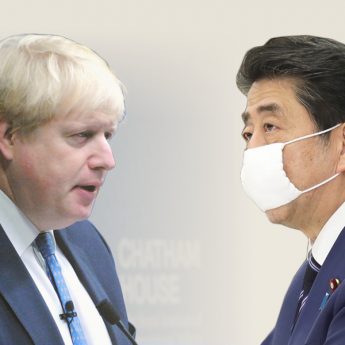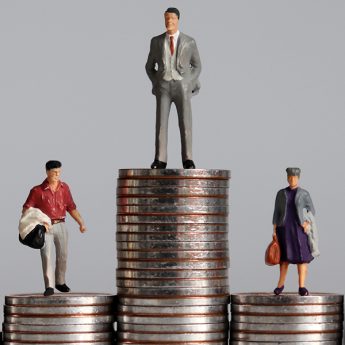What if? This is a question I like to put to people enrolled in my classes. What if the World Trade Organization ceased to exist? What if Japan used multiple currencies rather than just the yen? What if Tokyo opted to leave Japan in a Tokyoxit, deal or no deal? The last is a topic I wrote about for this column in the May 2018 issue of ACUMEN (“Dreaming of Tokyoxit”).
The most recent “What if?” I invited people to ponder was: What if the French yellow vests, or gilets jaunes, were to come to Japan? These citizen activists are attracting as much interest in Japan as elsewhere.
Chanchanko
I wondered what people would think if such an uprising started here, so I decided to call the Japanese version “the yellow chanchanko movement”. Look up chanchanko in a Japanese–English dictionary and you will find “a padded sleeveless kimono jacket,” or something similar. You get the general idea. I should also mention that it is a long established—if increasingly rarely practiced—Japanese tradition to present people with a red chanchanko when they reach the age of 60, in celebration of longevity.
People clad in yellow rather than red chanchanko filling the streets of Japan to protest something is an image that I find quite exciting. What is likely to be the focal point of their complaints? What kind of people are they likely to be? How diverse? How vocal? How violent? And so on. I urged my students to put their heads round the prospect of the coming of chanchanko jaunes days to the Japanese isles.
“Won’t happen” was the overwhelming initial response. Japanese people are simply too docile to go for that kind of thing. Uprisings are not their style. They can’t be bothered. They are too busy. They are too bad at making a scene. And so on.
Yet, I persisted, and finally persuaded people to form two groups of five to six. Each was asked to come up with ideas for a chanchanko jaunes movement. The results were quite remarkable.
Experience and influence
One group said that Japan’s yellow-chanchanko–clad battalion would most likely be led by the very old and the very young. For one thing, people in their seventies and older are the most socially conscious stratum of Japanese society. They either experienced World War II or remember what it was like to live out the immediate post-war years. This has given them a good nose for growing right-wing tendencies within the ruling political classes.
Quite a substantial number of these seniors were student activists in their time. So, they know how to organise and, given their background, they have tremendous influence over their children and even grandchildren. This is key.
Young people who have no intention of listening to their parents love to spend time with their grannies and grandads. They are fascinated by the tales the elderly are able to spin. They will learn how to demonstrate on the streets from those who have first-hand experience. They will be shown how to read the danger signs in the language of politicians intent on taking the nation in a non-democratic direction. The resultant coalition of awareness should eventually make the chanchanko jaunes movement unstoppable. So went the logic of one group of people in my “what if” class.
Time to talk
The other group was more focused on the outcome of the chanchanko jaunes movement rather than how it would come about. They thought that the emergence of such activism would lead to a grand congress of the people, one in which all the issues of discontent would be extensively and exhaustively discussed.
Unlike French President Emmanuel Macron’s public meetings with the protesters, the chanchanko jaunes-organised congress would not be a confrontation between policymakers and the general public. It would simply be a marathon chat in which everybody takes part. Who knows what might emerge from the conversation? A change of government? A different form of government? No government at all?
How about representatives of political parties and the civil service? Are such people off limits? Are they banned from attending the great meeting? Not at all, came the immediate answer from the group.
Everyone and anyone is welcome—but on one condition. Participants should make a point of attending the congress in the capacity of nothing more than people. Masks off please. Do not hide behind professional identities. Do not try to be a spokesperson for some entity. Just come as yourself, whoever you are. This was very refreshing given Japanese society’s tendency to think of people in terms of affiliation and positions in organisations rather than who they are and what they are like as individuals.
I rather congratulate myself for posing this “what if” question. It was a fun evening.






